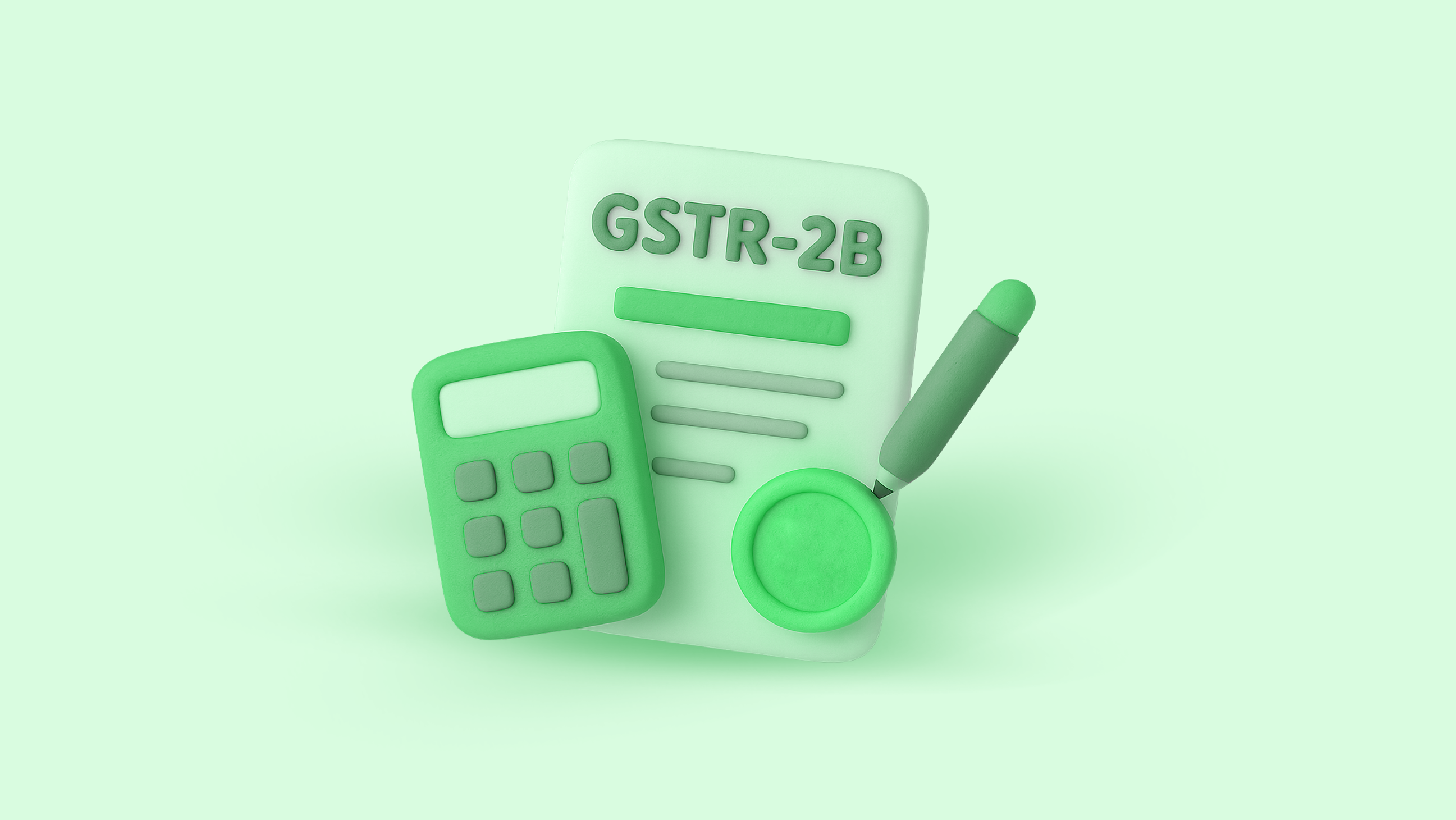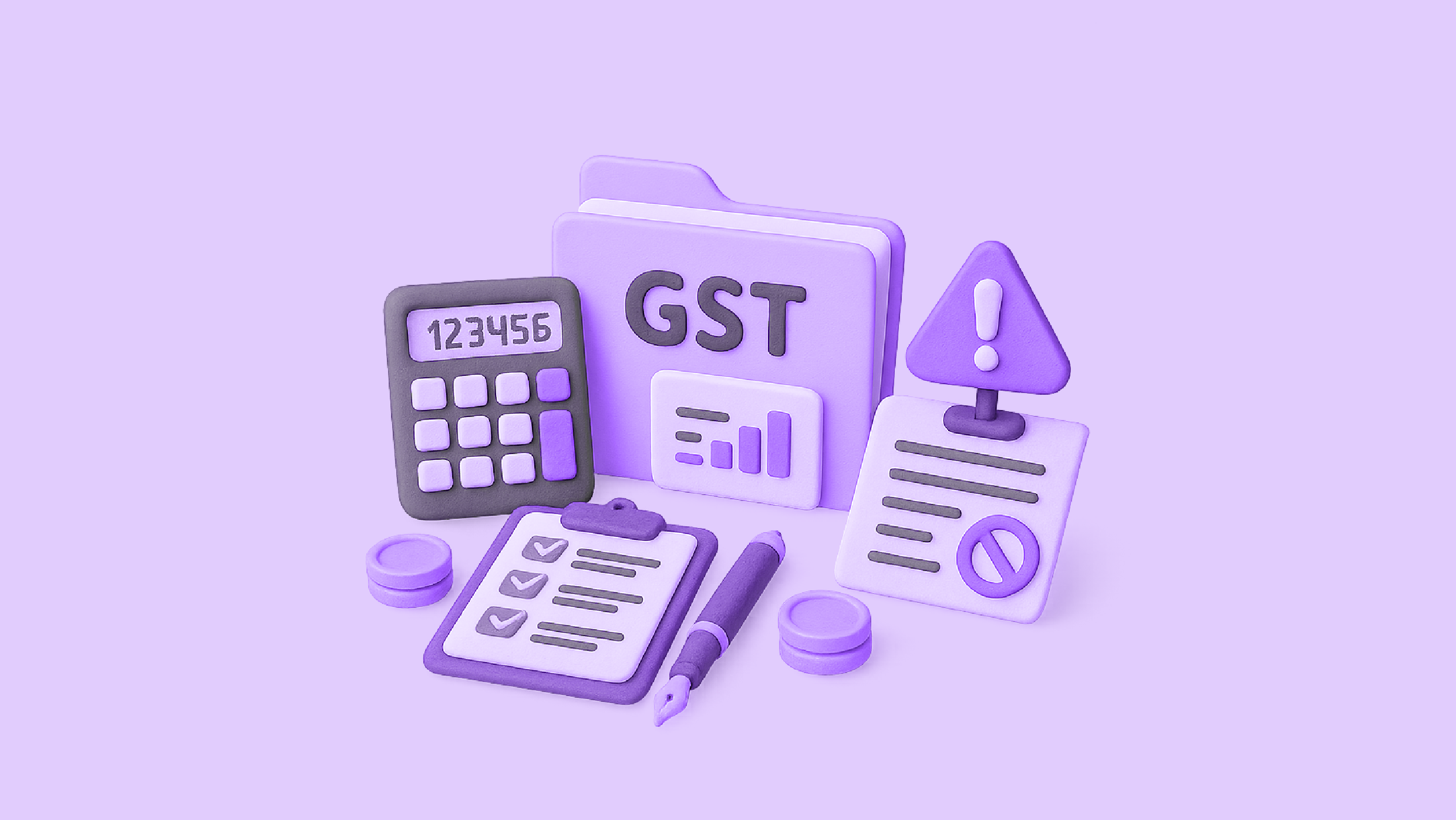GSTR-2B is a monthly, auto-generated Input Tax Credit (ITC) statement available to all regular GST-registered taxpayers in India. Launched in August 2020, this static report offers a consolidated view of eligible and ineligible ITC for a given tax period. Unlike GSTR‑2A, which updates in real-time, GSTR‑2B is frozen once generated, offering consistency for accurate ITC reporting.
It compiles data from your suppliers’ returns – GSTR‑1, GSTR‑5 (non-residents), and GSTR‑6 (Input Service Distributors), along with import-related credits. This makes it a reliable reference for reconciling ITC before filing GSTR‑3B.
Why GSTR‑2B Matters
- Accuracy in ITC claims: Segregates credit into ‘Available’ and ‘Not Available’, preventing misclaims.
- Compliance Assurance: Helps avoid ITC mismatches, a leading cause of GST notices under Sections 73 and 74.
- Predictable filing: Generated monthly on the 14th, based on supplier data filed up to the 13th.
Key Features of GSTR-2B
| Feature | Description |
| Static Summary | Once generated, the data doesn’t change, even if suppliers file or amend later. |
| Monthly Generation | Issued on the 14th of the following month (e.g., Oct ’25 GSTR-2B is generated Nov 14). |
| Detailed Invoice Data | Includes invoice-wise and credit/debit note-wise breakdowns, including imports and ISD credits |
| Supplier-Wise View | Lists invoices, credit/debit notes, and amendments uploaded by each supplier. |
| Eligibility Segregation | Classifies credits based on criteria like Section 16(4), reverse charge, and supplier status. |
| Advisory Notes | Each section offers guidance (via “View Advisory”) to assist in compliance. |
How is GSTR-2B Generated?
- Supplier filing: Vendors upload sales details via GSTR‑1, GSTR‑5, or GSTR‑6.
- Data compilation: GSTN compiles all inputs for the relevant recipient GSTIN.
- Static statement creation: GSTR‑2B is generated by the 14th of the subsequent month.
- Reconciliation: Businesses download and reconcile the statement with their purchase register.
- Mismatch resolution: Any discrepancies are flagged and addressed with suppliers or documented for audit readiness.
Note: Invoices filed late by a supplier will appear in the month they were filed and not retroactively.
GSTR‑2B vs GSTR‑2A: What’s the Difference?
| Aspect | GSTR‑2B | GSTR‑2A |
| Nature | Static | Dynamic |
| Purpose | Final ITC reference | Continuous supplier monitoring |
| Update Frequency | Monthly | Real-time |
| Cut-off Date | 13th of the following month | None |
| Generated On | 14th of the following month | Updates as supplier files |
| Advisory Notes | Yes | No |
Pro Tip: Use GSTR‑2B for claiming ITC, and GSTR‑2A to monitor late filings and vendor compliance.
How to Access & Download GSTR‑2B
- Log in to the GSTN portal.
- Navigate to Services → Returns → Returns Dashboard.
- Select the financial year and month and open GSTR‑2B.
- View/download in PDF, Excel, or JSON formats.
- Reconcile invoice-wise with your purchase records.
Importance and Benefits of GSTR-2B
Accuracy in ITC Claim
- Distinguishes eligible vs. ineligible credits.
- Advisory flags support correct GSTR‑3B filing.
Simplified Reconciliation
- Static data ensures clarity.
- Vendor-wise data enables pinpoint resolution.
Early Error Detection
- Identifies missing or mismatched invoices.
- Facilitates early follow-ups before filing.
Stronger Audit Trail
- Period-wise ITC summary supports audit defense.
- Helps respond to GST notices or assessments.
Reduction in Penalties
Diligent use of GSTR-2B reduces the risk of ITC reversal, interest, or litigation due to mismatched or ineligible claims.
Using GSTR-2B for Optimal GST Compliance – A Stepwise Checklist
- Download GSTR‑2B after the 14th of every month.
- Reconcile invoice-wise with your purchase register.
- Review ‘Available’ vs. ‘Not Available’ ITC flags.
- Raise queries with vendors for missing/incorrect data.
- Avoid claiming ITC not reflected in GSTR‑2B.
- Keep documentation for any deferred or disputed credit.
- Use automated tools (like Optotax) for large-scale reconciliation and error flagging.
Advance Compliance Tips
- File GSTR‑3B timely: Delays can halt GSTR‑2B generation.
- Monitor supplier filing: Invoices filed after the 13th will reflect only in the next cycle.
- Plan ahead for amendments: Adjust in subsequent months if suppliers revise entries.
Note: For QRMP taxpayers, GSTR‑2B is generated only for the last month of the quarter.
Closing Remarks
GSTR‑2B is a powerful tool that streamlines GST compliance by providing a clear, reliable, and structured ITC summary. Its static nature, routine generation on the 14th, and advisory support empower businesses to reconcile efficiently, avoid mismatches, and stay audit-ready.
Best practices:
- Incorporate GSTR‑2B into your monthly tax workflows and treat GSTR‑2B as your monthly ITC checklist.
- Use its segregation and advisories to flag issues early.
- Coordinate with suppliers for timely return filing.
- Leverage GSTR‑2B data to file accurate and defensible GSTR‑3B returns.
By leveraging GSTR‑2B, businesses can simplify their tax compliance, minimize errors, and reduce the risk of GST notices.
FAQs
Is GSTR‑2B mandatory?
No, but it’s auto-generated and is critical for accurate and compliant ITC claims. It does not require a separate filing.
Can GSTR‑2B be amended?
No. Amendments must be made by suppliers in their returns. Updated invoices appear in subsequent GSTR‑2Bs.
Why claim ITC via GSTR‑2B only?
It minimizes mismatches and is aligned with GSTN’s designed reconciliation workflow; claiming ITC outside its scope invites GST scrutiny.
Does GSTR-2B include import or SEZ-related ITC?
GSTR‑2B includes import invoices and SEZ-related transactions under reverse charge in Part A, similar to domestic invoices.
What if there’s a mismatch between my books and GSTR-2B?
Reach out to suppliers for corrections. Claim ITC only to the extent reflected in GSTR‑2B, and maintain supporting documentation.
Has GSTR‑2B replaced GSTR‑2A?
No. Both serve different purposes. GSTR‑2B is used for ITC filing, while GSTR‑2A helps track late filings and monitor vendor/supplier behavior.





